- Cultural and political rifts widen as newly elected Navajo commissioners of San Juan County, Utah, govern by resolutions approved without advice or informed consent of those governed.
- Critics say the commissioners’ private attorneys writing those resolutions and offering legal advice comprise a “proxy” government unaccountable to county residents.
- An upcoming hearing before the State Records Committee could determine whether the county can legally block access to background information that led to creation of those resolutions.
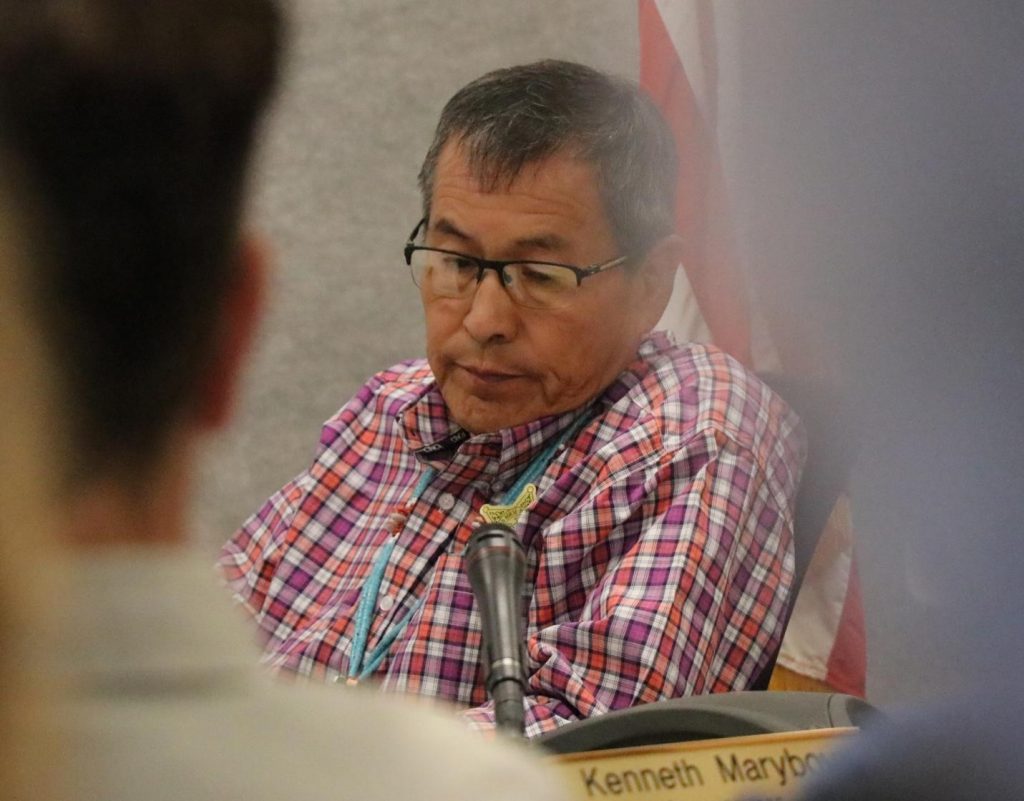
A skirmish in a long-term political battle is being waged publicly as the newly elected Navajo majority on the San Juan County, Utah, commission aggressively stakes claims to power.
Over their first five months in office commissioners Kenneth Maryboy and Willie Grayeyes, activists for Native American rights and sovereignty, have chosen to govern primarily through resolutions (23 as of May 21) written and approved without advice or informed consent of virtually anyone in the county.
The Colorado-based private attorney of the new commissioners, Steven Boos, wrote in a letter to his clients dated March 12 he was “principal” author of the resolutions.
Demands for open, transparent and accountable government have been stonewalled. As a result, the stage is set for a hearing before the State Records Committee on June 13 in Salt Lake City, the results of which could determine whether San Juan County or any unit of Utah government can legally block access to communication related to creation of public documents by their private attorneys.
“It appears the county is being governed by an attorney (Boos) from Durango, Colorado,” said Bruce Adams, San Juan County’s District 1 commissioner.
In a wide-ranging interview conducted May 14, Boos instead likened his role to that of a legislative aide with the background necessary to guide institutional clients through often Byzantine policies and procedures and write technical documents such as proposed laws, ordinances and, most conspicuously, resolutions. His résumé does not reflect a career of political activism; it’s mostly commonplace lawyering on behalf of Native American governments and agencies.
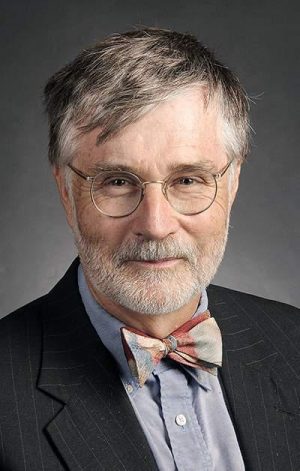
Nevertheless Boos has become a symbolic lightning rod to many county residents, the personification of an outsider with designs on remaking their way of life. He successfully assisted Maryboy and Grayeyes in several hot-button, politically charged cases, and his law firm has played a prominent role in ongoing federal redistricting litigation that paved the way to shift the county’s balance of political power. If even a smidgen of public-spirited comity existed before that landmark case, it’s been replaced by a downward spiral of legal maneuvering, lack of trust, pique and peevishness.
“I have a background in history,” Shanon Brooks, president of Monticello (Utah) College, told commissioners in February, “and this has happened many, many times where tyranny has come in and overridden the will of the people. This is textbook.”
“I’m into history,” said Grayeyes. “My ancestors were here. When did yours come?”
“I don’t represent just one group of people,” Grayeyes said a few moments later, according to a report published by The Salt Lake Tribune.
“Well, this resolution does,” Brooks replied.
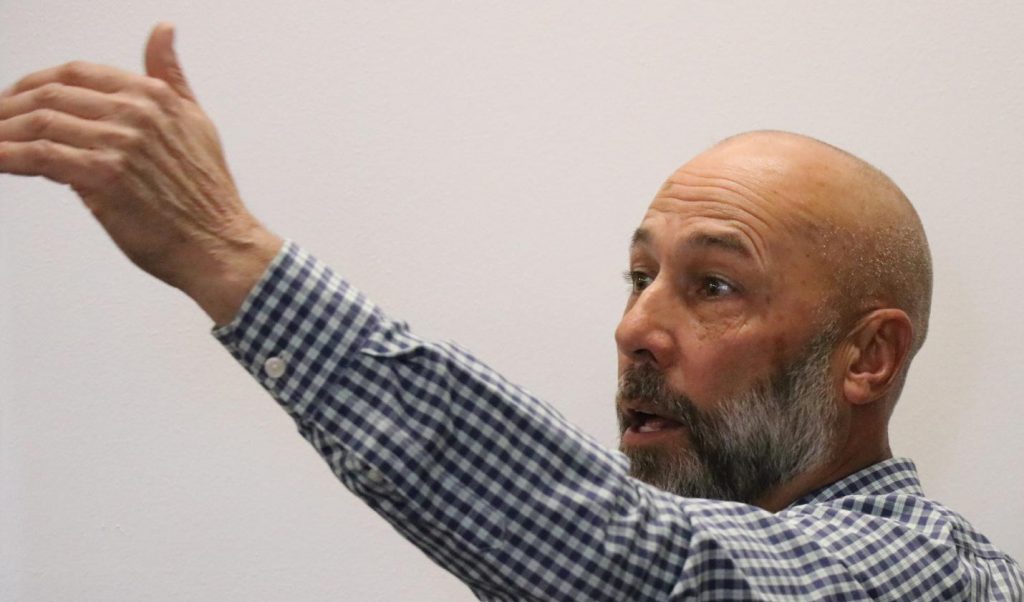
Brooks told commissioners at their April 16 public meeting he was concerned about policy being influenced by a “proxy” government unaccountable to San Juan County residents and the motivations of lawyers who are providing normally expensive services to Maryboy and Grayeyes for free.
Kim Henderson, a resident of Monticello, grilled Maryboy on whether any public forum had been held to discuss one of numerous resolutions introduced by him over the past two months. He said no. Any input from county residents? No. San Juan County staff consulted? No.
Her passion was withering. When Maryboy referred to those in attendance at the meeting as “the peanut gallery,” Henderson erupted, “Oh, now, we’re a peanut gallery? I take great offense to what you just said. You just called your constituents the peanut gallery.”
Henderson told San Juan County commissioners that if they continue to govern by passing resolutions written by Boos without public input, she’d petition for ballot referendums to overturn those resolutions.
And that’s what she did.
After the next meeting, three weeks later, she and four others – Brooks, Anna Tom, Betty Jones and Wendy Black – filed to begin the laborious process to put a referendum on the ballot during the county’s next election. If approved by voters it would nullify the resolution passed just minutes before in support of an expanded version of Bears Ears National Monument.
The reaction of the San Juan County Democratic Party chairman to even the possibility of a referendum was visceral and reflexive. “Comments at the April 16 meeting suggest that some white citizens of the county should have the right to submit a host of issues to referendum elections, rather than learn to work with the Navajo majority on the commission,” wrote James Adakai in a letter published by The Salt Lake Tribune and the Canyon Echo. “This is flatly racist.”
Brooks responded: “Apparently, Adakai assumes that anyone who disagrees with him is a racist.”
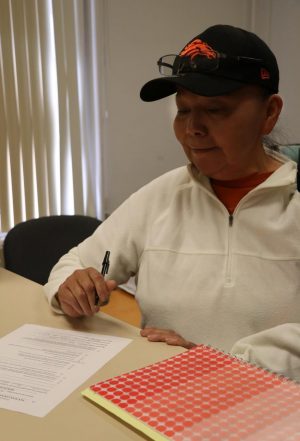
It’s been hard to penetrate the rhetorical fog created by national political campaigns to create, shrink and now litigate Bears Ears. Utah Diné Bikéyah, the nonprofit Grayeyes and Maryboy ran before winning seats on the county commission, says 98 percent of Utah Navajos support the monument. U.S Sen. Mike Lee (R-Utah) says the opposite is true. “After spending the week meeting with Utahns across the state, I am convinced that local support for this proposed monument is practically non-existent. …” said Lee.
If recent elections are any indication, San Juan County remains deeply anti-monument, even with a slight majority of Navajo residents.
- Not one pro-Bears Ears National Monument candidate came even close to winning any countywide race in November.
- Former commissioner Rebecca Benally, an anti-monument Navajo, lost a squeaker of a primary race last year to Maryboy despite winning her district’s two Navajo majority precincts. Liberal voters in and around Bluff put him over the top.
- Tally up the total number of votes countywide that put Grayeyes and Maryboy on the commission. Those two pro-monument candidates got 2,022 votes; Kelly Laws and Adams got 2,354 (2,957 if you count the write-ins against Maryboy).
- The Aneth Chapter, the largest of the Utah Navajo chapters and the only one wholly within the state’s border, voted against monument designation. It also is closest to Bears Ears.
County Attorney Kendall Laws, citing case law, advised the commission that since the resolution was “more of an opinion piece” and not equivalent to law or ordinance it need not be referred to voters during the next election. Adams and Cheryl Bowers, a member of Blanding’s City Council, said the referendum was important because it could help determine “the will of the people” regarding support for Bears Ears National Monument.
The two Navajo commissioners voted against allowing the referendum to go forward.
“I can only assume that the commissioners who voted against it have no desire to know the will of the people in San Juan Country on the monument,” Henderson said after the meeting. “I truly hope that the commission will reconsider. In the meantime, we will continue to stay involved in county issues. Shanon Brooks and I plan to start holding townhall meetings at different locations throughout the county.”
AN ‘OUT-OF-BODY’ EXPERIENCE
THE MANAGEMENT STYLE OF THE NEW COMMISSIONERS over the past five months has taken a toll on day-in, day-out workings of government. Communication with staff is almost non-existent.
The most visible and possibly far-reaching impact so far has been the resignation of Kelly Pehrson, county administrator, who left effective April 26 to take a high-level state job in Salt Lake City.
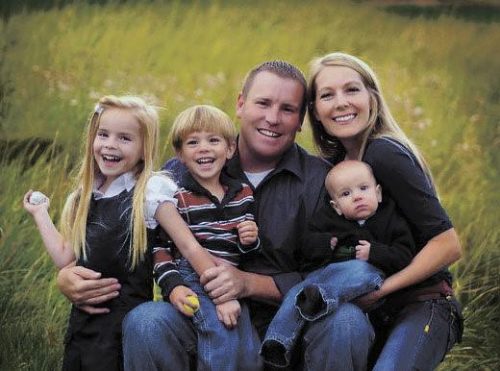
“Since I have been administrator, I have tried very hard to have these commissioners work with staff, but they have refused. Somehow they have been coached to not discuss anything with staff,” Pehrson told the Deseret News.
Pehrson serves as deputy to Kerry Gibson, who was recently appointed as the director of the Utah Department of Agriculture and Food after the retirement of LuAnn Adams.
“I am pleased to have someone of Kelly’s ability and caliber join our team,” said Gibson in a notification posted
on the department’s website. “He brings a wealth of government
management expertise, a track record for pragmatic decision making,
and the capacity to elevate UDAF administrative functions.”
The Department of Agriculture is responsible for the administration of Utah’s agricultural laws, which mandate a wide variety of activities including inspection, regulation, information, rulemaking, loan issuance, marketing and development, pest and disease control, consumer protection, improving the economic position of agriculture and promoting the state’s agricultural community.
Duties of the deputy director include oversight of budgets, human resources and other administrative functions for the department.
Pehrson worked for 12 years in San Juan County, initially as city manager in Monticello. He also worked in the banking industry and holds an MBA with an emphasis in finance.
“It was a very difficult decision. I love my home town, and I loved my job. I was hoping to be there forever,” he said in an email.
Pehrson’s upward career trajectory and professional commendations contrast with Maryboy’s evaluation.
“I had to repeatedly ask Pehrson to update the Commission regarding progress he’d made towards complying with approved County resolutions, including providing a County organizational chart, a policies and procedures manual, and updates on ongoing County projects. To no avail,” Maryboy said in a news release. “If Pehrson had not resigned (giving only 48 hours’ notice), we would have taken disciplinary action. The county administrator was more interested in throwing sand in the gears than in supporting the elected commission majority. That arrangement could not continue.”
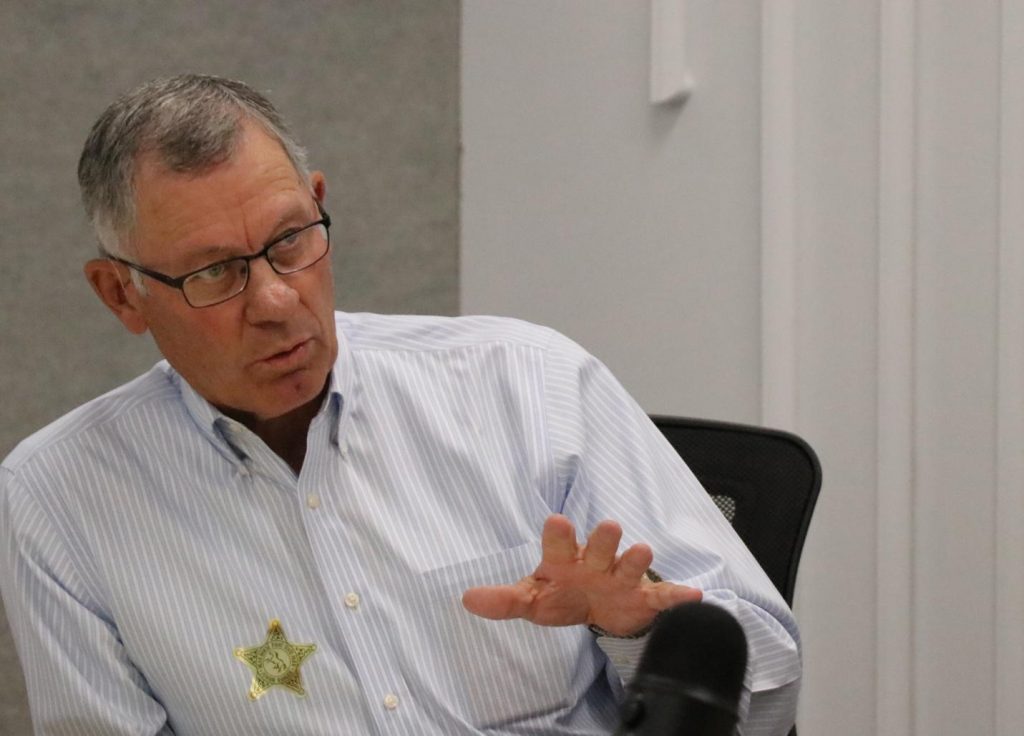
Minutes before the Navajo commissioners won a 2-1 vote on May 7 to hire him, David Everitt, the Moab city manager and chief of staff under former Salt Lake City Mayor Ralph Becker prefaced his introductory remarks to the public by saying he felt like he was having an “out-of-body experience.”
He wasn’t in Moab or Salt Lake City anymore.
Everitt temporarily replaced Pehrson as county administrator over objections of the public and despite commissioners being warned the vote violated notification requirements of the Utah Open and Public Meetings Act.
“The law can be contested,” said Grayeyes, implying he disagreed with several constituents’ interpretations of the law.
Jeff Hunt, an attorney specializing in First Amendment, media and intellectual property law weighed in. “The action they took violates the open meetings law,” Hunt said in a Deseret News report.
Hunt said the hiring of Everitt could be in jeopardy if anyone files an objection with the county attorney – which is exactly what community activist Henderson did just minutes after the vote. “They’re blatantly disregarding the law and how things are supposed to function,” Henderson said, according to the Deseret News report.
At the next meeting, on May 21, Henderson’s concerns were acknowledged with a bit of procedural finesse. After Everitt, as county administrator, read the resolution into the public record, commissioners OK’d a second resolution to hire him. It said “there is disagreement whether Resolution 2019-22 was posted in the manner required by the Open and Public Meetings Act and, while it is position of the Commission that posting complied with the Act, it is appropriate to resolve any controversy through ratification of the Personal Services Contract with Mr. Everitt.” Adams, who was excluded from involvement in the hiring process, voted against it. He said the process was illegal.
“I still take huge issue in the manner by which Mr. Everitt was hired. It was far from transparent,” Henderson said. “The fact that commissioners Maryboy and Grayeyes took no pause in violating the Open Meetings Act is very upsetting to say the least.”
Because the resolution said the commission did nothing wrong, it’s unclear whether its “appropriate” resolution of the matter would prevent the county from taking similar action in the future.
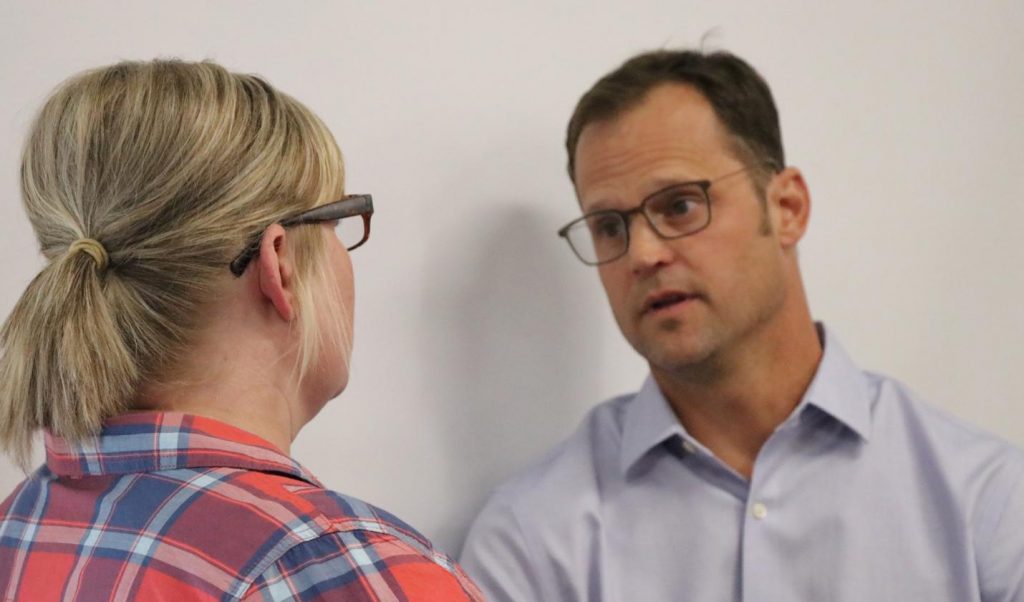
Everitt hit the ground running. Even before his contract was formally ratified, he submitted a draft manual of policies and procedures the county should follow in conducting official business – lack of which Maryboy cited in his feud with Pehrson. The 18-page document specifically addressed decorum: “No person shall interrupt legislative proceedings. … Citizens attending meetings shall observe rules of propriety, decorum and good conduct. Unauthorized remarks and similar demonstrations shall not be permitted by the chair who may direct the removal of offenders from the meeting.”
It addressed commissioner behavior as well: “No Commissioner shall indulge in personalities, attack the motives of a Commissioner or use language tending to hold a Commissioner up to contempt or ridicule.” The draft did not include removal of commissioners who might violate the rules.
BUILDING A LEGAL, ETHICAL FIREWALL
ONE OF THE RESOLUTIONS WRITTEN BY BOOS would authorize the county to sue Kendall Laws. A possible outcome of the lawsuit could be Laws’ removal from office, according to the resolution. Laws, in his role as duly elected county attorney, advised commissioners it was a bad idea; cost of the action to county taxpayers could be “tens of thousands.” The county would lose no matter who wins.
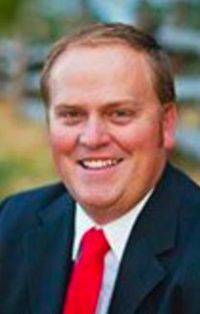
It charged without accompanying evidence that “in 2018, the County Attorney participated in and directed an unlawful investigation into the residence status of Willie Grayeyes; he was aware of an unlawful and unconstitutional scheme to remove Mr. Grayeyes as a candidate for the County Commission District 2 seat; and he made a baseless request to the Davis County Attorney to initiate a criminal action against Mr. Grayeyes.”
Laws failed to comply with “lawful directives” of the commissioners, according to the resolution. One of those directives was to withdraw the county’s support of President Trump’s version of Bears Ears National Monument and its association with Colorado-based Mountain States Legal Foundation, which was assisting the county free of charge.
When the resolution to authorize the lawsuit was introduced on April 2, Laws told the commissioners he was waiting on an advisory legal opinion from the Utah State Bar related to a possible conflict of interest and never said he wouldn’t comply with directives of the resolution to withdraw support of Trump’s monument, which passed on February 19.
“My concern was that I did not want to open the county, or myself, to liability if in fact there was a conflict of interest that hadn’t been declared. Week before last (first week in April), I was given documentation from the commissioners that gave me enough information to finally, confidently know that San Juan County doesn’t have significant liability if someone were to challenge their actions on the matter,” Laws said in an email. “The purpose of the Bar request was to know what to do in the event they didn’t provide me any information. However, once they did provide me satisfactory documentation to know that the county’s liability was limited, I determined it wasn’t necessary to wait for the Bar because the facts had changed.”
Laws confirmed the possible conflict of interest was related to the commissioners’ longtime roles as founders and board members of Utah Diné Bikéyah, an advocate for creation of the monument and tribal management of it. Specifically, the resolution OK’d by Maryboy and Grayeyes terminated the county’s litigation involving UDB.
Documents that indicated Maryboy and Grayeyes had severed formal ties with UDB were filed with the county clerk before they were sworn-in and available to Laws at the time the resolution was passed, according to Boos.
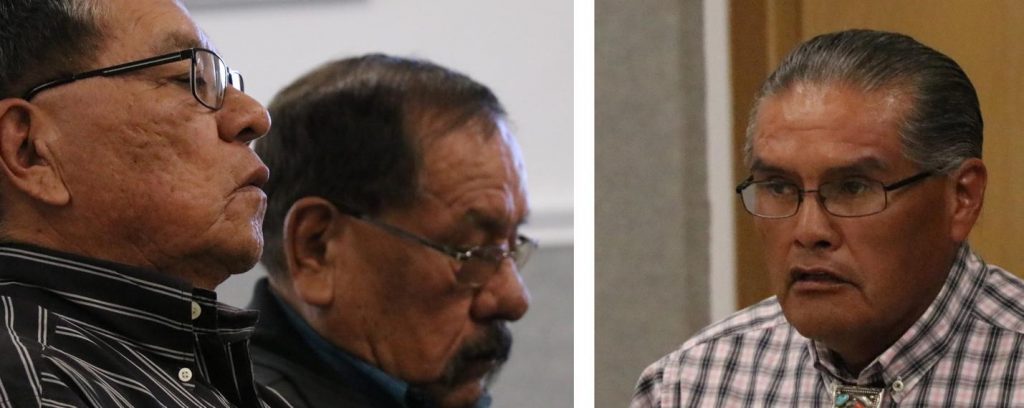
It’s hard to overestimate the influence UDB and its national allies have had in advocating for Native American interests connected with use and management of public lands in southeastern Utah.
The advocacy organization based in Salt Lake City has a staff of eight and an estimated 50 volunteers, according the latest IRS Form 990. It has assumed a visible lead in the national initiative to create Bears Ears National Monument.
Part of that success is directly attributable to its ability to tap funding sources outside of San Juan County and even Utah.
The organization had revenues of $1,281,371 in 2017 – all but $45,847 came from grants and contributions. Total revenue since UDB began reporting to the IRS beginning in 2014 is $2,656,931.
Its executive director, Gavin Noyes, made $96,922; total salaries were $310,282.
UDB spent $142,538, or almost $12,000 per month, on travel; $287,433 on advertising and promotion; and $23,508 attending conferences.
(Editor: The Zephyr sought information related to amounts given by specific donors to Utah Dine Bikeyah. Gavin Noyes, executive director of the organization, did not respond to requests.)
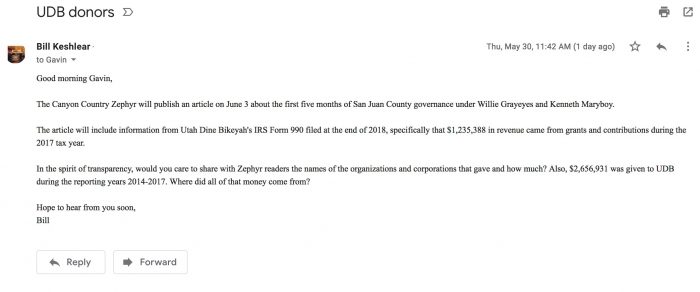
Over the years environmental groups – national and regional conservation organizations – tried to get their massive America’s Red Rock Wilderness off the ground. Various iterations of it have been introduced since 1989. Thousands of dollars down the drain. In 2012, a 1.4 million-acre Greater Canyonlands National Monument was proposed. It would’ve encircled Canyonlands National Park. Same result. A bold idea couldn’t overcome Republican opposition and the caution of President Obama’s first Interior secretary, Ken Salazar, who insisted on consensus among ever-feuding factions before going forward.
Native American spiritual and cultural sensibilities never figured prominently in any of those proposals so Kenneth Maryboy, his brother, Mark, Grayeyes and others launched a parallel initiative, mustering in 2010 after an invitation from former U.S. Sen. Bob Bennett (R-Utah). The group morphed into Utah Diné Bikéyah.
Its first proposal was Diné Bikéyah National Conservation Area in 2013 and then Bears Ears National Monument. UDB found itself at the epicenter of a campaign that not only focused on public-land use but preservation of American Indian culture along with its spiritual underpinnings.
UDB and its allies give voice to a historically marginalized group of Americans. Ironically, voices of hundreds of Utah Navajos unaffiliated with the nonprofits have been muted in the multimillion-dollar, multiyear national political campaign conducted ostensibly on their behalf to create what is becoming less a sacred sanctuary to protect artifacts of indigenous peoples than a playground for tourists, rock climbers, mountain bikers and ATV riders.
Those environmental and cultural preservationists do not speak for Betty Jones, “Grandma Betty,” an Elder possibly in her ’90s whose family raised sheep in the Bears Ears region during the early part of the 20th century. For the most part they don’t even speak her language, literally and figuratively.
If anyone has a legitimate claim to Bears Ears, it’s Grandma Betty. Her story is about hard-scrabble interdependency between Native American herders of several tribes and clans moving from pasture to pasture and Mormon pioneers in a struggle to survive. It was passed down through her parents and grandparents and resonates with the authenticity of Navajo oral traditions.
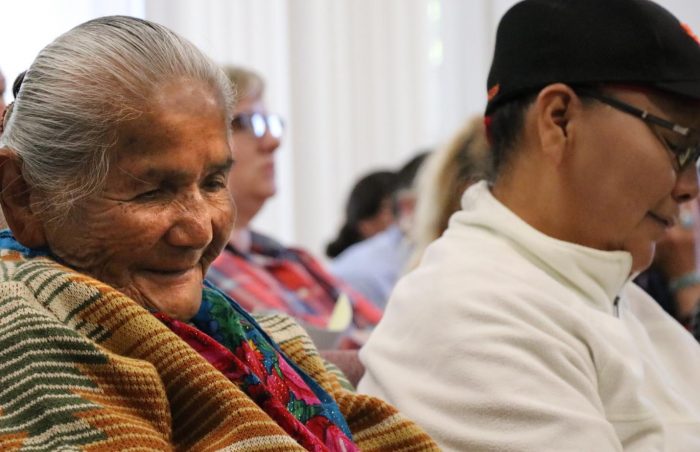
Given deeply felt advocacy of the new San Juan County commissioners, any conscientious county attorney would raise red flags: Where would their priorities lie? With needs of a desperately poor county and constituents such as Grandma Betty? Or would the policies of the pro-Bears Ears commissioners align – to varying degrees – with the goals of a grand alliance that gave them a national platform and collectively can tap seemingly unlimited sources of funds.
Laws wanted a legal firewall to protect the county if the new commissioners crossed an ethical or legal line.
And that’s what he got.
Maryboy and Grayeyes also got a not-so-little something. On April 16, a notice was filed in federal district court to withdraw San Juan County as an objecting intervenor to lawsuits filed by conservation and tribal groups challenging Trump’s downsizing of the monument.
Headlines such as “San Juan County formally switches sides in Bears Ears debate” couldn’t hurt the prospects of a bill in Congress to enact the 1.9 million-acre monument Maryboy and Grayeyes have pushed for since at least 2015.
The resolution to authorize a county lawsuit against its county attorney then possibly oust him from office because of “unlawful” and “unconstitutional” schemes was tabled. Grayeyes and Adams voted in favor of tabling the action; Maryboy abstained and expressed his disappointment.
MISTRUST, CONSPIRACIES AND THE LIMITS OF KUMBAYA
PERHAPS REFLECTING A BREACH YEARS IN THE MAKING, Maryboy has said publicly that he doesn’t trust County Attorney Kendall Laws.
The effort to remove him that played out in March and April was foreshadowed in a letter dated November 29 written by Boos to Grayeyes more than a month before the two new commissioners took their oath of office. In it he outlined the process to remove Laws from office should he not comply with directives of the commission.
Boos said his advice was in response to a disagreement over the legal role of county attorney. Boos likened the county attorney-commissioner relationship to that of a private-sector attorney and client; Laws’ interpretation was much broader. The county attorney looks after the county’s interests, he said, which at times could conflict with those of the commission as a whole or commissioners individually. Taken at face value there’s nothing particularly nefarious about dueling interpretations of law but it was enough to validate pre-existing mistrust and inflame the conspiracy-minded.
“This letter clearly shows that Grayeyes, Maryboy and Boos have been conspiring against the San Juan County prosecutor prior to them taking office,” according to The Petroglyph, a blog widely read in the county.
“This conspiracy by these three is clearly an attempt to destroy San Juan County government from within. With Boos as the puppet master over Maryboy and Grayeyes this conspiracy puts himself in control of San Juan County, Utah,” according to The Petroglyph.
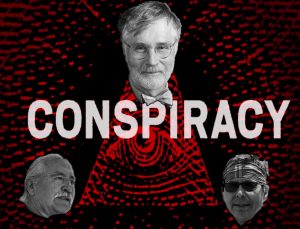
Grayeyes was chair of UDB at the time he received the advice from Boos.
At an event held at the University of Utah five days later to mark the anniversary of President Trump’s proclamation that shrunk Bears Ears National Monument by 85 percent, the Navajo Elder projected a quiet sense that he would fight for what he believes. He talked in general terms about how he had been the target of shady political maneuvers and said “they” have plans for him.
Prophetically perhaps, on December 28, Kelly Laws, Grayeyes’ Republican opponent in the November election and father of Kendall, filed a complaint alleging he was not a Utah resident and therefore ineligible to serve as commissioner. State District 7 Judge Don Torgerson ruled in January that Grayeyes is a Utah resident.
Grayeyes also said he had “plans” for his political opponents. He did not elaborate.
However, a panel discussion offered a glimpse inside a long-term, no-holds-barred campaign for tribal management of a huge swath of federal land in San Juan County, part of which is now unfolding on its commission.

Activists discussed among other things their strategy to “undermine the Trump administration,” in the words of panelist Keala Carter, a public lands specialist with Bears Ears Inter-Tribal Coalition, and “re-indigenize” the region, according to Honor Keeler, assistant director of Utah Diné Bikéyah.
There was talk of healing. An inspirational video showed members of several tribes, historical enemies, coming together for unity moments on a run across the high desert to Bears Ears. Utah Diné Bikéyah’s schwag is even engraved “Bears Ears is Healing.”
Kumbaya apparently has limits when dealing with anti-monument political opponents. You need revolution before healing, said Carter. Moderator Angelo Baca, a graduate student at New York University and staff member of Utah Diné Bikéyah, echoed that sentiment toward the end of a recent movie produced by public television station KUED in Salt Lake City, as did the new commissioners in interactions with some San Juan County constituents during their first few months in office.
This was an exchange during the public comment period at a recent commission meeting held in the county seat of Monticello:
Kim Henderson, San Juan County resident: Is it my understanding that you have presented these current resolutions, Commissioner Maryboy? (pause waiting for an answer) Yes?
Commissioner Kenneth Maryboy: Yes. I have.
Henderson: Where can I go to find information on who participated in the dialogue and the writing of these resolutions and who has authored them? Who has signed off on them?
Maryboy: That’s the job of (County Administrator) Kelly Pehrson and (County Attorney) Kendall Laws.
Henderson: They’re the ones who wrote them?
Maryboy: No. I said that’s where you get the answer.
Henderson: So they should have the information on that?
Maryboy: They should, and all those (GRAMA?) requests have been sent back.
Henderson: That’s an awful long process when it’s a simple request.
Maryboy: A simple request would say ‘the two commissioner as Native American … you are not … right now you’re saying that you’re too dumb to write a resolution.’ Is that what you’re saying? That’s what it comes down to.
Henderson: I deny that. That’s not what I said. I simply want to know who wrote it.
Maryboy: I feel the same way.
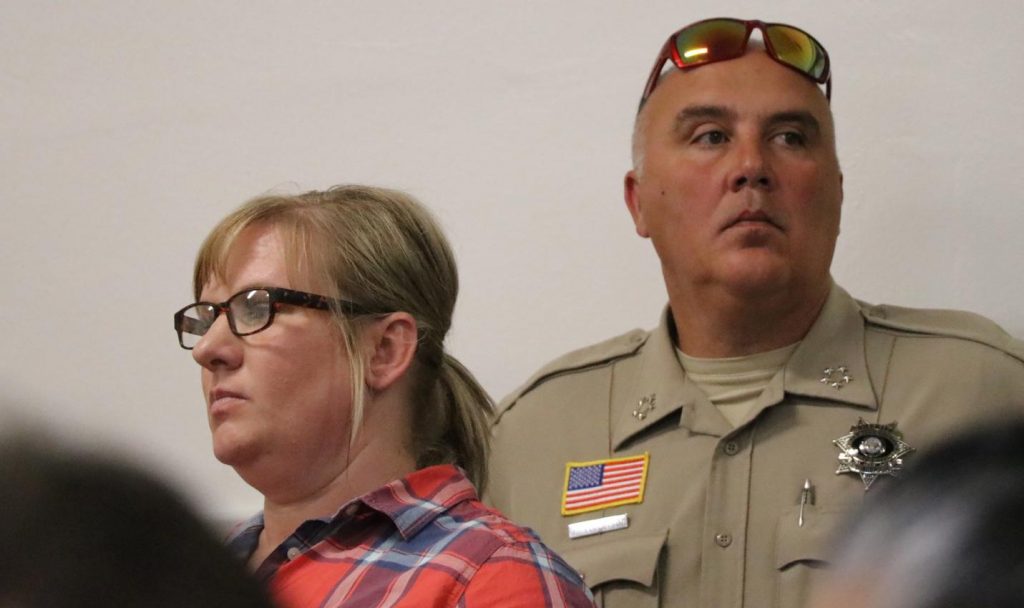
BEHIND-THE-SCENES INFLUENCE
ONE OF THE QUESTIONERS during the April 2 meeting asked the commissioners if attorney Boos was texting suggested responses to the newly elected commissioners in real time. Boos was sitting in the back of the room. The commissioners didn’t answer the question, and Boos sidestepped it in a later interview.
It has become the subject of one of at least a dozen requests filed under GRAMA to peek at documents that would outline policy development since Grayeyes and Maryboy took over and before. What, if any, has been the contribution of the extensive national network of consultants, lawyers, lobbyists, fundraisers, environmental and Native American activists and tribal politicians the two have cultivated over sometimes controversial careers as elected officials and leaders of tribal government programs?
Letters dated March 12 and April 4 written as responses to several GRAMA requests shine a light on Boos’ relationship with Maryboy and Grayeyes and the county’s possible legal strategy to block public access to any communication with his clients. They suggest the county would cite attorney-client confidentiality.
In the March 12 letter written to the new commissioners, Boos advised, “You (Maryboy and Grayeyes) have no duty to share the substance of our conversations or any written communications we have concerning these resolutions.”
Evidence the commissioners are listening to Boos’ advice on conducting public business behind closed doors surfaced just weeks after they were sworn-in. During a public comment period at a January meeting, Maryboy told a constituent who asked about authorship of several resolutions he was not required to divulge anything.
Boos concluded the April 4 letter with a lawyerly shot across the bow: “I realize that some of the requesters might wish to pursue their efforts to obtain this clearly exempt material, despite being advised that it is not subject to GRAMA disclosure. This would, of course, raise a legitimate question as to whether the requests are being pursued in bad faith and solely for the purposes of harassment, especially if the requestors pursue the requests through litigation. You (John David Nielson, San Juan County clerk, and Kelly Pehrson, San Juan County administrator) may wish to discuss with Mr. Laws whether such litigation would make the requestors liable for an award of attorneys’ fees against them pursuant to Utah Code 78B-5- 825 or whether the County would have a claim against the requestors for wrongful use of civil proceedings …”
The career of the new commissioners’ attorney has focused on Indian law. He’s a partner with Maynes, Bradford, Shipps and Sheftel, LLP, a firm with offices in Durango and Denver, Colorado, and general counsel to the Southern Ute Tribe in southwestern Colorado, assisting the tribe in health care, gaming and social services. Other clients have included the Navajo Nation, Fort Defiance Indian Hospital Board, Tuba City Regional Health Care Corporation and Navajo Nation Hospitality Enterprise.
Boos said he’s currently working for Maryboy and Grayeyes pro bono, reflecting a relationship with the two that goes back to when they both served as delegates on the Navajo Nation Council. From 1995 to 2001, he was chief legislative counsel in the Navajo Nation Office of Legislative Counsel, acting as council parliamentarian and guiding legislation through review and adoption.
Boos has been effective, likely as responsible as anyone for the ascendancy of Maryboy and Grayeyes.
- He helped restore Grayeyes to the November 2018 ballot after he was bumped off by San Juan County.
- He represented Grayeyes in a case that questioned his status as a Utah resident and won. His defense focused in part on Navajo traditions, including the fact that Grayeyes’ umbilical cord is buried at Navajo Mountain, Utah.
- His law firm is part of the team handling the redistricting lawsuit for the Navajo Nation that arguably gave Grayeyes enough of an edge to win a seat on the county commission.
Boos’ work for the new commissioners was similar to tasks commonly performed by a trusted and experienced legislative aide on behalf of a lawmaker. However, he has written, signed and sent letters under his law firm’s branded stationery to clients Maryboy, Grayeyes and other officials. Those legal opinions were forwarded as the county’s official responses to the GRAMA requests. There’s no indication Grayeyes or Maryboy approved the letters dated March 12 and April 4 or even read them.
Many San Juan County residents believe that’s beyond the ethical – or possibly legal – role of a volunteer without formal ties to the county.
THE CASE FOR PUBLIC ACCESS
DOZENS OF REQUESTS FOR PUBLIC RECORDS under GRAMA are submitted each year to all levels of Utah government for all kinds of reasons. Appeals are sent to the State Records Committee, which decides whether a hearing is warranted. The committee grants relatively few.
However, one request related to governance of San Juan County since Maryboy and Grayeyes took over was successful. It flowed through the GRAMA pipeline to San Juan County, then an unsuccessful attempt at mediation and will be heard by the committee on June 13.
Here’s what the requester, Bill Keshlear, a writer researching information for a possible book on Bears Ears and articles for the Zephyr, wants to take a peek at: “All emails, phone records, postal letters, rough drafts and any other material relating to authorship and payment for services in connection with the production of resolutions introduced by Kenneth Maryboy at a San Juan County Commission meeting on February 5.”
The resolutions pulled San Juan County out of litigation involving Utah Diné Bikéyah, the pro-Bears Ears National Monument nonprofit Maryboy and Grayeyes led for almost a decade until they stepped down after winning elections to become county commissioners.
And here’s how the requester justifies his request: “The records sought primarily benefit the public because they would offer insight into the policy-making apparatus of the current San Juan County Commission. One of the first actions of the commission has been to write and introduce these resolutions. Given the pressing needs of San Juan County, this request under GRAMA could partially explain the commissioners’ sense of priorities.”
Utahns should be proud of their open records law. It presumes “a constitutional right of access concerning conduct of the public’s business” and “promotes the public’s right of easy and reasonable access to unrestricted public records and favors public access when … countervailing interests are of equal weight.” The Legislature envisioned it as one of several ways to keep public officials accountable to folks they’re supposed to serve.
If San Juan County – through its new commissioners, Maryboy and Grayeyes, county attorney, Kendall Laws, interim administrator, David Everitt, or others – pursues the strategy at the June 13 hearing outlined by the private attorney of the commissioners, Boos, and is successful, possibly precedent-setting questions could be raised: Does GRAMA have any value if elected or appointed officials can route all policy considerations through a private attorney then successfully claim attorney-client confidentiality? Are San Juan County officials and their private lawyers for all practical purposes removing an important tool that even ordinary Utahns can access to hold their elected representatives accountable? Will those efforts be further stifled if faced with veiled threats by private attorneys acting as proxies of those elected officials?
TICK-TOCK: TIMELINE OF A POLITICAL TRANSITION
November 6 – Willie Grayeyes and Mark Maryboy win elections to become San Juan County commissioners and a majority bloc that will determine many aspects of policy.
November 29 – A letter from Steven Boos, a private attorney who represents Grayeyes and Maryboy, to commissioner-elect Grayeyes outlines the process of possibly removing County Attorney Kendall Laws from office. In later commission meetings, Maryboy states publicly he doesn’t trust Laws.
December 4 – Utah Diné Bikéyah hosts screenings at the University of Utah of inspirational movies produced by Native Americans. Activists discuss strategy to “undermine the Trump administration” and “re-indigenize” the region. Grayeyes says he has “plans” for his political opponents and that “they” have plans for him.
December 28 – Kelly Laws, father of County Attorney Kendall, files a lawsuit to challenge the residency of Grayeyes. The elder Laws lost the race Grayeyes won.
January 29 – State District 7 Judge Don Torgerson rules Grayeyes is a Utah resident.
January and February – Grayeyes and Maryboy refuse numerous requests from constituents to identify who wrote several resolutions to alter county policy.
February 19 – The Navajo commissioners win a 2-1 vote to rescind all prior county resolutions opposing re-establishment of President Obama’s version Bears Ears National Monument and directs County Attorney Kendall Laws to “immediately” withdraw the county’s motion to intervene in cases challenging President Trump’s decision to shrink the monument. One of those cases involves the nonprofit Maryboy and Grayeyes ran prior to becoming commissioners.
March 12 –Steven Boos indicates he was the “principal” author of the resolutions. Boos says correspondence between he and the commissioners are protected by client-attorney confidentiality.
April 16 – Commissioners Maryboy and Bruce Adams table a resolution to authorize a county lawsuit against its county attorney, Kendall Laws. It says Laws failed to comply with “lawful directives” of the commissioners.
April 16 – A notice is filed in federal district court to withdraw San Juan County as an objecting intervenor to lawsuits filed by conservation and tribal groups challenging Trump’s downsizing of the monument.
April 24 – A letter dated April 4 written by Boos to San Juan County officials suggests requesters could be “pursuing GRAMA requests solely for the purposes of harassment and that ‘the county might want to consider whether the County would have a claim against the requesters for wrongful use of civil proceedings …’ “
April 26 – Utah Attorney General’s Office conducts a training for the commissioners and other county officials on open meetings laws and public records requests. Maryboy and Grayeyes do not attend.
May 7 – The Navajo commissioners win a 2-1 vote to hire David Everitt, Moab city manager, as temporary county administrator.
May 7 – Paperwork is filed with the county clerk to begin the process to place a referendum on Bears Ears National Monument on the 2020 ballot.
May 21 – The May 7 vote on Everitt is ratified.
June 13 – State Records Committee convenes a hearing related to a GRAMA request that seeks “All emails, phone records, postal letters, rough drafts and any other material relating to authorship and payment for services in connection with the production of resolutions introduced by Kenneth Maryboy at a San Juan County Commission meeting on February 5.”
(Keshlear regularly contributes to the Zephyr. He was a Salt Lake Tribune editor before taking a job as communication director of the Utah Democratic Party during the first Obama election cycle.)
To comment, scroll to the bottom of the page.
Don’t forget the Zephyr ads! All links are hot!







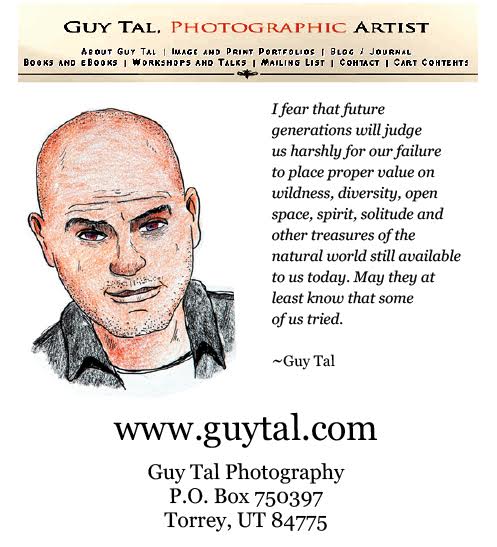

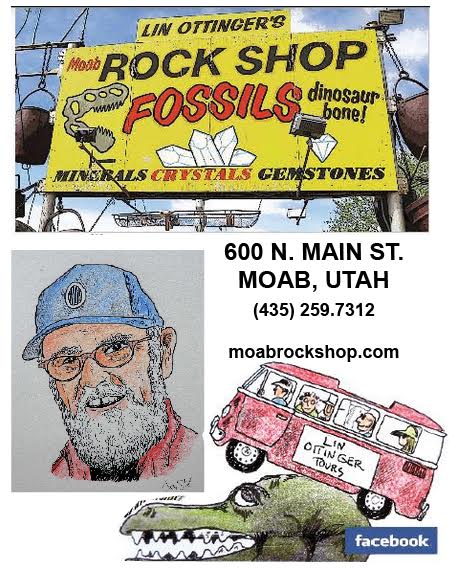
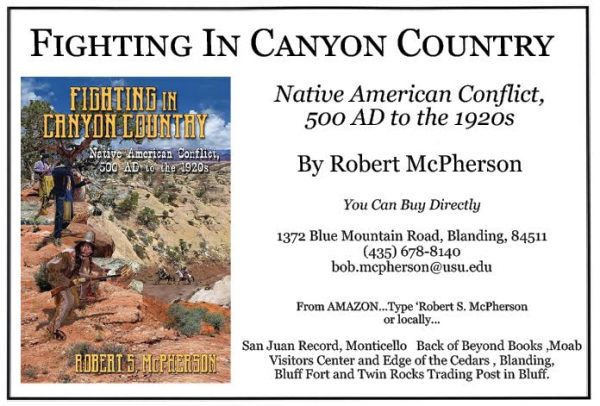
I’m having a hard time understanding what exactly Bill Keshlear is trying to say in this tome of an article. What he doesn’t say is that the voters of San Juan County duly and constitutionally elected a new majority on the county commission, and that majority has the authority to hire a new county administrator, which they needed to do since Pehrson was clearly insubordinate and undercutting them. Commissioners Maryboy and Grayeyes are just doing their jobs and trying to protect the land for the people who want a sustainable future for the region, as opposed to all the old reactionaries the voters just threw out. The article suggests that a majority of San Juan County voters oppose the Bears Ears monument. Those voters must have forgotten to show up because they certainly lost the election. My advice to them is to get over it and work harder next time.
It’s real hard for the disempowered old guard in southern Utah to accept the fact that progressives won the election and are actually moving forward. And now they’re reduced to a sad and desperate effort to smear and dog-whistle the new commissioners. They don’t seem to understand that yes, most San Juan County voters agree with the new new guys and want them to succeed.
Thanks for your comment, Mr. Woodruff.
The article is about 6,000 words long. Sorry you didn’t get the point. Frankly, I don’t either but I’m encouraged by your criticism that focuses on what I didn’t say. I appreciate the implication that you want to read even more words.
Of course, there are an infinite number of words I could’ve written. Maybe I’ll just give you a few hundred more.
Kelly Laws and Rebecca Benally certainly lost the election and Kenneth Maryboy Willie Grayeyes are entitled to exercise the power of their offices – at least as long as they don’t cross that legal line. Both have walked up to it over their careers.
However, the election was reminiscent of what happens in banana republics not 243-year-old democracies. A federal judge re-drew political boundaries along racial lines – every bit as undemocratic as what existed before – to guarantee Navajo control. The decision is being appealed.
It would’ve been virtually impossible for Grayeyes to lose to Laws in District 2 given the 15-point advantage handed to him; or a white candidate to win with a 25-point Navajo advantage in District 3.
But specifically:
In my reporting, I found nothing to indicate Kelly Pehrson was “clearly insubordinate.” I doubt he could’ve jumped from the administrator of a poor, rural county to second in command of a major state agency if he were incompetent. If you based your opinion on Maryboy’s publicly available press release, you might not be aware of his track record of character assassination to gain public office and downright sleazy politics once in.
Based on the initial reaction of many of the commissioners’ constituents, I doubt they’d take your advice “to get over it.” However, they’d probably work harder next time.
Other than the results of what many in San Juan County consider a rigged election, I know of nothing to indicate the new commissioners have a progressive mandate on Bears Ears – or anything else that might go over big in liberal urban enclaves such as Salt Lake City. Not one countywide candidate – U.S. Senate, Congress, state House – came even close to winning. Democrats didn’t even contest the race against Phil Lyman. Tallied countywide, anti-Bears Ears commission candidates got a little less than one-third more votes than pro-Bears Ears candidates.
Rebecca Benally won the two Navajo majority precincts in last year’s Democratic primary. But for the strong-arm tactics of county party leadership and the organizational sophistication of Bluff liberals, she would’ve won. As we’re seeing so far, she was easily the best advocate for San Juan County in general and her district, specifically. At least she never referred publicly to constituents as members of a “peanut gallery.” That I know of.
Maryboy and Grayeyes made it clear they really don’t care about the “will of the people” when at their May 21 commission meeting they put the kibosh on a possible Bears Ears ballot referendum. Were they afraid of what the results might indicate?
After monitoring governance of San Juan County under Maryboy and Grayeyes for the past five months, it’s my sense that the two are ideologues to their core, steeped in liberal Native American activism connected to expansion of tribal sovereignty. They don’t seem prepared for the nuts of bolts of their jobs and show no inclination to learn. They don’t seem to have a clue about solving dire problems the county faces or working with people to get things done. After talking at length to several county staff members, I reported communication is virtually nonexistent.
Their private attorney seems to be doing a lot of the heavy lifting behind closed doors, and there’s no indication Maryboy and Grayeyes are involved. There’s no way for county residents to find out one way or the other because the attorney advises his clients they’re under no obligation to divulge anything to constituents or anybody else.
They’re stoking an already inflammatory situation enabled by identity politics of Democrats statewide and supported by a rich and powerful network of allies that can tap seemingly unlimited sources of funds.
I have to say that I have read the article twice and tried to figure out the point. The former majority commissioners did the wishes of the minority of the county. Now the majority of the residents have a voice and the minority is upset. Maybe if the former commission listened to the majority we would not be in this situation now. To say that Rebeca Benally was a DINO [Democratic in Name Only], to stand on stage with Mr. Trump only caused me to reach for the Pepto-Bismol. As far as County Administrator Pehrson, he did the bidding of the commissioners, any parrot can mimic a tune. As an elected official in the County, to be called a liar to my face by the individual shows his true colors. This administrator has nothing on Kellyanne of the current administration. In recent e-mails concerning the closure of the Bluff transfer station to the Hole-in-the-Rock Foundation, I asked did the foundation purchase the land or trade it? The administrator’s response was, “File a GAMMA request.” This question only needed a no/yes response. Yes, we have a governing problem here in the San Juan County, due to the previous commission. The Bluff community decided to incorporate into the Town of Bluff to protect the residents. If you think this is a liberal enclave, recall that the Mayor only won by two votes. Spanish Valley, is now seen as a cash crop for the County. I enjoy your writing but getting to the point in 6,000 words should be easy.
Perhaps, more than anything, this highlights the ridiculousness of Utah counties still clinging to the 3-commissioner form of government in this day and age. Personally, I’m tickled pink that 2 Native Americans are now calling the shots in San Juan County, in reaction to the shenanigans of the Lyman-nesque era (Lyman is a convicted felon, by the way). But should a county’s residents want, the state has put in place a process to change its government, initially targeting Grand County to change its council form which had both legislative and executive powers. So San Juan County, if the majority agree, can undertake this same process to rid itself of the all-powerful commission model in favor of a more diverse legislative council, checked by an elected or appointed county executive. How ironic that a process codified to force Grand County to change its governance could actually start pecking away at the outdated 3-commissioner model used in much of Utah.
Thanks for your comment, Mr. Shook.
It certainly reflects the depth of hostility – publicly expressed by even elected officials such as yourself – that I characterized as “a downward spiral of legal maneuvering, lack of trust, pique and peevishness.” Perhaps that was the point of the report.
I was pleasantly surprised to discover in my reporting for the article that while the primary critics of the monument were passionate about preserving a way of life they understandably felt was under attack by forces outside of their control and even geographical region, they cared deeply about representative democracy. Several attempted to reign in others who at times became discourteous to elected officials such as Kenneth Maryboy, who even from the outset was giving them a Bronx cheer. Reports of Bears Ears politics in the mainstream media were biased if not wholly misinformed.
If it’s any consolation, the same guy who you say told you to file a GRAMA request to answer a simple question denied my GRAMA request. He was working on behalf of the county and the two new commissioners (while most likely looking for another job). As mentioned in the article, I appealed and a hearing into the matter is next week.
But I am curious. You seemed to imply that September’s mayoral election in Bluff between Ann Leppanen and Marcia Hadenfeldt reflected some sort of political diversity. Can either Leppanen or Hadenfeldt be considered conservative – at least the way it’s understood in other parts of the county? I am assuming you might be critical of Hadenfeldt because of her association through the years with Business Owners of Bluff and Bluff Service Area.
As I mentioned above, I’ve seen no convincing evidence that anything the new commissioners have done so far reflects the will of a majority of their constituents. The notion seems hard-wired into the conventional wisdom of winners of a dodgy election and their ideological soulmates.
Thanks for your comment, Mr. Thomas.
Two Native Americans are calling the shots as a result of political lines re-drawn under a federal court order that’s under appeal, not because of Phil Lyman’s “shenanigans.” If anything, his landslide win to take Mike Noel’s seat reflects his ability to represent conservative values in San Juan County.
If you’re referring to Lyman’s conviction related to the Recapture ride, it was a misdemeanor.
I do not have feelings one wary or other about Hadenfeldt, as a member of BOB she has along with the group encouraged development of the community in a responsible manner. You indicated in your article that without the Liberal Folks of Bluff, Benally would have won. I consider myself to be a conservative anarchist, if we could govern without government a pipe dream to say the least, I think it was Rodney King who said “cant we all just get along.” Even in the small town of Bluff, no good deed goes unpunished. The old saying in Utah was the difference between the Church and State was one block, here in San Juan it is 150 feet. I guess my question then becomes what do you consider majority of constituents. What has happened as I said the minority who were in the ruling class for years now have to live with the majority in control and they are not happy. When the commission voted against Bear Ears did they ask for a referendum on the issue, now the minority are asking for that but denied.
I do not have hostility towards the government, however I expect the government to respond to citizens and not special interests. Review the action on the Bluff Transfer Station and let me know how the county responded to the citizens of Bluff and the Navajo Nation. My Best Wishes to You.
Bill, are you a reporter or a “communications specialist” because your point of view has political agenda written all over it. I’ve never read such one sided reporting masquerading as a news article – although maybe it’s a massive op-ed – it’s a little hard to tell. Do you work for the paper or are you shilling for some client who needs communications help?
Thanks for your critical comments, Mr Woodruff, and continuing to engage.
Your point of view seems consistent with what, in my opinion, is a disturbingly narrow perspective accepted as conventional wisdom generated by influential media outlets surrounding Bears Ears and Grand Staircase. It’s no wonder readers might define this article as something “with a political agenda all over it.” They’ve likely never read anything published by, say, The New York Times, Los Angeles Time, NPR, CNN, or Salt Lake Tribune that attempts to tell the broader Bears Ears story.
“Grandma Betty,” whom I mentioned in the article, represents an anti-monument voice that’s been muted by “big foots” and your associates in a multimillion dollar, multiyear national PR campaign.
Does it take someone with “a political agenda” to point that out? In your work as a Washington, D.C., lobbyist for Southern Utah Wilderness Alliance (net assets, $12,251,335), it’s likely you’d view anything that examines the role of your allies through a political prism. Tell me though, were you paid to post comments to the Zephyr site as part of your advocacy?
Misinformation, speculation and unsubstantiated opinion masked as “objective” news reporting is routinely published by even the most reputable outlets.
The flow often begins with environmental nonprofits and sympathetic media. The stuff is distributed and aggregated online to tens of thousands of readers around the nation and the world, accepted as true then hard-wired into conventional wisdom.
Case in point: On Aug. 15 of last year, BLM invited the public to comment on four proposals to manage President Trump’s version of Grand Staircase-Escalante National Monument. The drafts ranged from no change in the current plan to least restrictive to most restrictive. News media across the country fixated on the agency’s “preferred” option, which would restrict activities such as coal mining, the least.
A report by The Guardian, a United Kingdom newspaper that publishes an online edition for readers in the United States, is representative. “US officials have announced plans to allow increased mining on land that once belonged to two national monuments Donald Trump shrank, and to sell off some of the land despite pledges not to do so.”
Without poring through a mountain of documents produced by the agency, you’d likely assume the decision was a done deal. “The lands Trump tried to cut out of the Staircase have an ‘open for business’ sign on them. Off-road vehicles, coal mining, drilling and other activities that without a doubt would destroy monument objects would be allowed,” said one of your associates at SUWA, Steve Bloch.
As you are probably aware, Mr. Woodruff, It’s not a done deal. Regional and national media have only given activists such as SUWA’s Bloch license to commit hyperbole in the first degree. Only in flights of fancy would any of the four alternatives or combinations of the four allow activities that “without a doubt” destroy monument objects.
______________
I don’t make any money off of anything the Canyon Country Zephyr publishes. I don’t have clients – professional or political – who pay for any of the stuff I write.
Nothing particularly nefarious about that. It’s part of a master’s degree project to gather information for a book proposal on environmental politics and communication strategies behind creation of Bears Ears National Monument. The topic started with an interest in sustainable tourism. It’s now much more.
In my opinion, there is no perhaps no environmental issue in Utah that is as controversial as public land management and use in southeast Utah. It’s directly tied to big-money advocacy conducted behind closed doors, expansion of Native American sovereignty, a resurgence of the so-called Sagebrush Rebellion, local, state and presidential politics – even religion.
______________
If you’re ever in Salt Lake City, I’d enjoy sitting down with you for a few minutes to talk about your client’s impact on litigation-heavy environmentalism, its track record on conservation and, frankly, its impact on local representative government.
https://twitter.com/dickwoodruff11 (see @DickWoodruff11, Apr 9, “Lobbing (sic) for Utah Wilderness with @RepWexton’s terrific staffer Ali Vangrow.)
Thanks for your perspective, Mr. Shook. Can I come down later this summer and chat?
Bill – I think it’s great that we’ve outed each other.
When I used to get paid for living I was a DC advocate for cancer patients. Now I’m a volunteer advocate working to protect public land in Utah. You may ask why, and it’s because for the past 20 years I’ve been walking the incredible canyon country of southern Utah. I’ve seen it all, from the Vermillion Cliffs to Bears Ears, and what’s there is completely and totally unique. There is nowhere in the world that compares in its natural and remote desert beauty to southern Utah, not to mention its unique historical significance. Consider just one place – Cedar Mesa, which Trump took out of the Bears Ears monument. It was once home to thousands of native Americans. Now it’s virtually uninhabited and unprotected. We ought to be protecting that land from looting, and from leasing to extractive industries that operate in a boom and bust cycle, creating few lasting jobs and leaving the land destroyed. I live on the east coast. Take a look at West Virginia if you want to see what a history of land exploitation by the energy industry looks like. So I support what the new commissioners in San Juan are trying to do to protect the land and by extension the people there.
And yes, I’m proud to be a volunteer for SUWA because SUWA works to make sure that Utah officials actually follow the law. When it comes to public health and safety, protecting the environment, ensuring fairness for consumers, elected officials pass laws all the time, and turn around and ignore them. If it weren’t for public interest groups like SUWA, going to court and demanding accountability and the rule of law — America wouldn’t be much different from places like Turkey or Russia.
So yes Bill, next time I’m in Utah, lets get together. I try not to let differences of opinion stand in the way of friendship, but I have very definite views about southern Utah, and the fact is, most Utahans agree with me.
Bill Keshlear : You are always welcome to stop by and we can discuss issues. If we had a bar I would by you a drink otherwise it is off to the Bistro. I see your lawsuit by the folks in SLC. Maybe you could Attorney Laws to respond to other items of concern in the county. Bluff Transfer Station / Foundation Campground water quality / 3+ Story building without a ladder truck in the county. I am always willing to talk since it is so cheap.
Thanks, Mr. Woodruff.
There’s one thing I’m curious about. Well, more than one.
But how exactly will the monument protect anything, at least more than it was protected before?
Why have organizations such as yours lobbied unsuccessfully year after year on wilderness proposals and not, say, for BLM rangers to aggressively enforce laws already on the books? SUWA never put protection of sacred artifacts of early human habitation at the top of its agenda. Never much embraced preservation of Native American culture along with its sustaining environment. Why is that?
The campaign to designate the monument has attracted thousands in part by stunning visuals produced by a sophisticated national PR campaign your organization supports. Before that, it was just a blank spot on the map for most travelers getting to Monument Valley, Lake Powell and the Grand Canyon. That’s what has kept the area relatively pristine. Now, the secret’s out.
There’s never been even a remote possibility of major extraction-industry development within Obama’s monument. Compare what’s going on in the northern part of eastern Utah and other parts of the Four Corners area. Why has that not happened around Bears Ears? The editor of the Zephyr has talked to people visiting the region who expect to see oil derricks on Bears Ears buttes. Where did they get that idea?
The monument is a colossally bad idea. A nice perspective, I thought, that explains why was Stacy Young’s piece published by the Zephyr in December:
“To me, on election night 2016, the decision to designate a large national monument in San Juan County went from being a questionable theoretical proposition to a clear act of environmental negligence. There was no plausible scenario at that point in which the new monument would be implemented with any enthusiasm. A more realistic expectation was for the catastrophe that has unfolded.”
“(Tommy Beaudreau, Chief-of-Staff of former Interior Secretary Jewell) acknowledges that the administration knew in late 2016 that the monument proclamation would be received as an act of provocation if not a declaration of total war. They knew there was no chance that the monument as designated would be properly funded or any other constructive steps taken toward its implementation. They knew the ensuing controversy would be protracted and the outcome of the fight uncertain. They knew this chain reaction would negatively impact the landscape and its cultural resources. And still they set it in motion.
“The obvious question is this: how could anyone make a risk assessment even superficially similar to the one outlined at the top yet reach a completely opposite conclusion about what constitutes a responsible course of action? The answer, it turns out, depends on whether you’re trying to protect a place or a particular interpretation of the Antiquities Act.”
http://www.canyoncountryzephyr.com/2018/12/02/bears-ears-brinkmanship-with-friends-like-these-does-cedar-mesa-need-enemies-by-stacy-young/